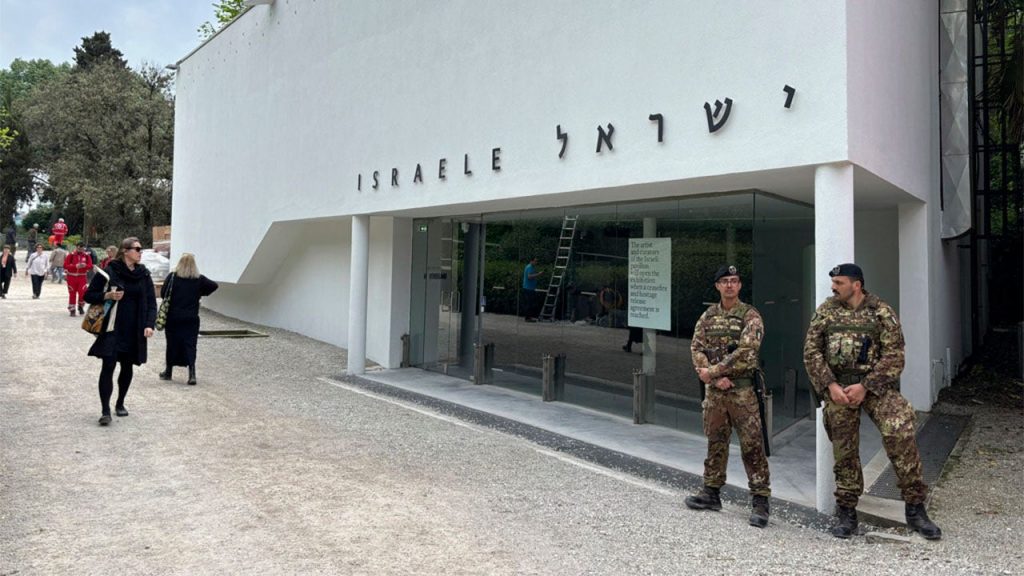The Israeli artist representing Israel at the Venice Biennale, along with the curators, announced that they would not open the Israeli pavilion until a cease-fire and hostage deal is reached in Israel’s conflict with Hamas in the Gaza Strip. The decision was made in solidarity with the families of hostages and the community in Israel calling for change. The artist, Ruth Patir, expressed her objection to cultural boycotts but found it difficult to present a project about the vulnerability of life during a time of disregard for it. The statement was made following criticism and calls for the exclusion of Israel at the Biennale to protest the war in Gaza.
Israel is one of 88 national participants in the 60th Venice Biennale, scheduled to run from April 20 to November 24. The Israeli pavilion, built in 1952, is one of the permanent representations of Israel at the event. Even before the decision to delay the opening, curators and critics had signed an open letter urging the Biennale to exclude the Israeli pavilion in protest of the ongoing conflict in Gaza. Despite opposition to Israel’s participation, Italy’s culture minister supported the decision, and the fair opened with heightened security measures in place. Each nation participating in the Biennale decides its show independently.
The Israeli pavilion is located inside the Giardini, the original venue of the world’s oldest contemporary art show, surrounded by 29 other national pavilions. Other nations present their exhibits at the nearby Arsenale or various venues throughout the city. The exhibit, titled “(M)otherland,” curated by Mira Lapidot and Tamar Margalit, was set to run from April 20 to November 24. In a statement, the curators expressed hope that conditions would change, allowing the exhibit to open for public viewing. For now, a video work created by Patir can be viewed through the pavilion window as a symbolic gesture while the pavilion remains closed.
The decision to delay the opening of the Israeli pavilion at the Venice Biennale reflects the current conflict between Israel and Hamas in the Gaza Strip. The curators and artist are standing in solidarity with those affected by the war and are calling for change in the situation. The standoff also reflects the broader tensions surrounding Israel’s participation in international events amidst criticism and calls for boycotts. Italy’s culture minister’s decision to support Israel’s participation provides a contrasting perspective to those opposing it.
The delay in opening the Israeli pavilion at the Venice Biennale highlights the challenges faced by artists and curators in presenting their work amidst political conflicts and controversies. The decision to wait for a cease-fire and hostage deal before opening the exhibit demonstrates a commitment to addressing the ongoing issues in the region and a desire for peaceful resolution. Despite the controversy surrounding Israel’s participation, the exhibit “(M)otherland” remains on display, with the hope that conditions will change to allow for its public opening. The decision to delay the opening of the Israeli pavilion at the Venice Biennale underscores the complex intersection of art, politics, and activism on the international stage.


